Choosing the best frugal automatic plant watering system is, probably, one of the most daunting tasks for homeowners today.
Here’s why.
There’s a vortex of information and products on the web promising this and that, and without the necessary commitment and the time to sift through all that content, it’s hard to know who’s telling the truth.
What follows is a scenario whereby you become more confused than before, and you end up doing nothing at all.
Call it procrastination.
What’s worse, you need to take that vacation and don’t want to keep bothering your neighbor to water your plants.
Committed to finding a smart watering solution, you keep looking and end up getting more pi**ed off.
Sounds familiar?
Well, I understand all your concerns, and that’s why I thought it would be helpful to come up with the best options for the automatic plant watering system that you can easily choose all in one place.
With these options, you can take your three weeks’ vacation and never have to worry about whether you’ll get your plants alive or otherwise.
Read - Smart Irrigation Controllers: The Definitive Comparison Guide
So, let’s begin.
Seven frugal options for automatic plant watering systems exclusive for smart homeowners.
Paid Automatic watering options

You can use these systems both indoors and outdoors.
Additionally, you can control some of these automatic plant watering systems by a wide range of gadgets ranging from your smartphone, tablet, laptop or even your voice!
I’ve specially chosen those automatic plant watering systems that don’t consume much energy.
Similarly, their power consumption is low, easy to set up, and reprogram.
So, let’s go through each one by one.
Read: Smart Irrigation Controllers: The Definitive Comparison Guide
1. Claber Garden Automatic Drip Watering System
Claber's award-winning Oasis Automatic Drip Watering System is the perfect solution for watering your plants when you're away for the holidays, on vacation, or just short on time.
Ideal for indoor use, the Oasis provides a consistent, perfectly calibrated amount of water to as many as 20 plants for up to 40 days.
And since it operates totally independently of faucets and electrical outlets, you will not need to worry about leaks or electrical problems while you're away.
More than one dripper can be used for larger plants or with greater watering requirements. This gravity feed system is completely independent, operating on one 9V alkaline battery.
Suitability: Watering indoor house plants.
2. DIY Micro Automatic Drip Irrigation Kit
Set the Watering and Interval time to your plants need. The system will automatically water to your set schedule.
Automatic Drip kit use 70% less water than traditional spray & drip heads, by spot watering only exactly where needed.
Powered with 4 AA batteries or Micro-USB cable. Enjoying peace of mind knowing the AA batteries will act as a backup during power outages.
With three programming buttons and an easy-to-read LCD display, it takes minutes to set your customized watering cycle.
Suitability: Indoor or outdoor container drip watering.
3. Rachio smart irrigation System
As the name suggest, Rachio smart irrigation system is a watering genius.
The system is capable of making weather forecasts by comparing the past, present, and future weather patterns and watering only when necessary to save up to 50% water.
All you need to do is download the App that runs the system, make necessary settings including setup of zones (8 to 16 zones) and Rachio device does the rest.
The system integrates well with other top tier home automation systems such as Xfinity, IFTTT, Nexia, Control4, iControl, and Amazon Echo.
Suitability: Watering the lawn using overhead sprinklers.
4. Glowpear Urban Garden
The Glowpear Urban Garden is a modular planter specifically designed for growing a wide range of fruits, vegetables, herbs, and flowers in the urban environment.
An iconic, contemporary design aesthetic and durable construction make these modern planters perfect for balconies, courtyards, decks and patios, while clever design features ensure they are ready for use on any surface, indoor or out.
Best of all, you'll never have to worry about forgetting to water your plants again.
Every Glowpear Urban Garden comes with its own integrated self-watering system to ensure your plants thrive, regardless of your busy lifestyle.
Suitability: Modern self watering planter.
Free DIY Automatic Plant Watering System Options
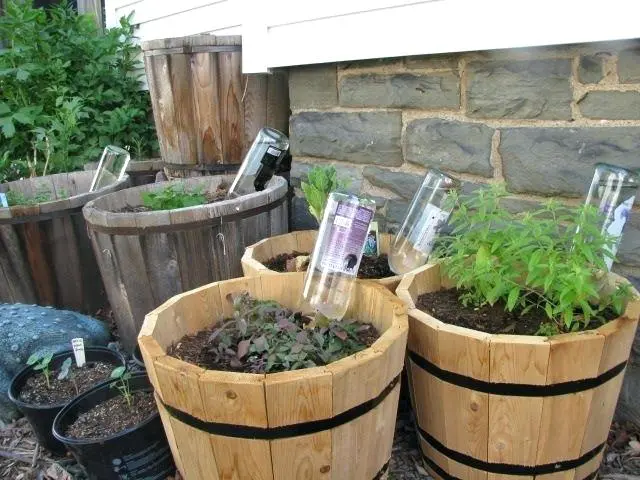
You don’t have to break the bank to taste the awesomeness of some watering systems.
If you are on a tight budget, you can easily make your own automatic plant watering system at home.
The cost can be anywhere between free to a few dollars depending on what you want to achieve.
To start you off, here are some options to try out on your own.
Notably, most of the DIY watering systems are primarily made to be used on indoor container plants.
1. From plastic bags
It is very easy to make an automatic plant watering system from a couple of plastic bags.
All you need is some threads, a sharp needle, and of course, several plastic bags depending on the number of plants.
Now, once you have these materials, it’s time to make the system.
Insert the thread inside the needle hole as you would do when sewing. The thread will serve as a wick.
Pierce through the plastic bag from inside out.
Make a knot at the end of the thread and pull the needle further out so that the knot attaches to the bag.
Remove the needle and leave the thread hanging on to your planter around the root zone.
Fill the bag with water and properly tie the top.
Once you’ve filled the bag hang it a little bit above your plant and the water will start dripping on the media giving your plants the much-needed moisture.
You already have the simplest, cheapest plant watering system that will allow you to take a 2-3 weeks’ vacation.
Repeat the same for all of your indoor plants.
2. From recycled plastic bottles
This one is by far the most common method for making an automatic plant watering system.
Instead of throwing away empty plastic bottles and tampering them, you can recycle them into a self-watering planter for the indoor plants.
Here’s how,
For this exercise, you’ll need empty plastic bottles, a sharp scissor or anything you can use to cut the bottle, cotton thread/strings, and a suitable growing media (pot soil) preferably pumice or coco peat.
There are several approaches to making a self-watering planter using empty plastic bottles, but I’m going to focus on common three.
The first one is very simple.
All you need is to make several tiny perforations on the bottle, fill it with water, close the bottle tightly, and bury it upside-down into the growing media as illustrated below.
Don't forget to make a bigger hole at the bottom of the bottle so that you can occasionally top-up the water.
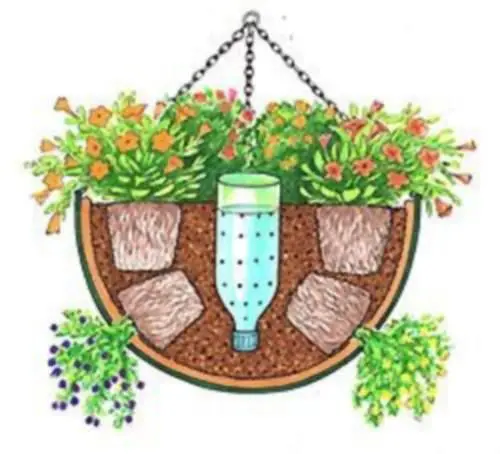
A self watering hanging basket
The second approach is more or less the same as the first one.
The only difference is that instead of burying the bottle into the planter upside down, you bury it upright without closing the bottle.
You can add water whenever necessary as the image below suggests.
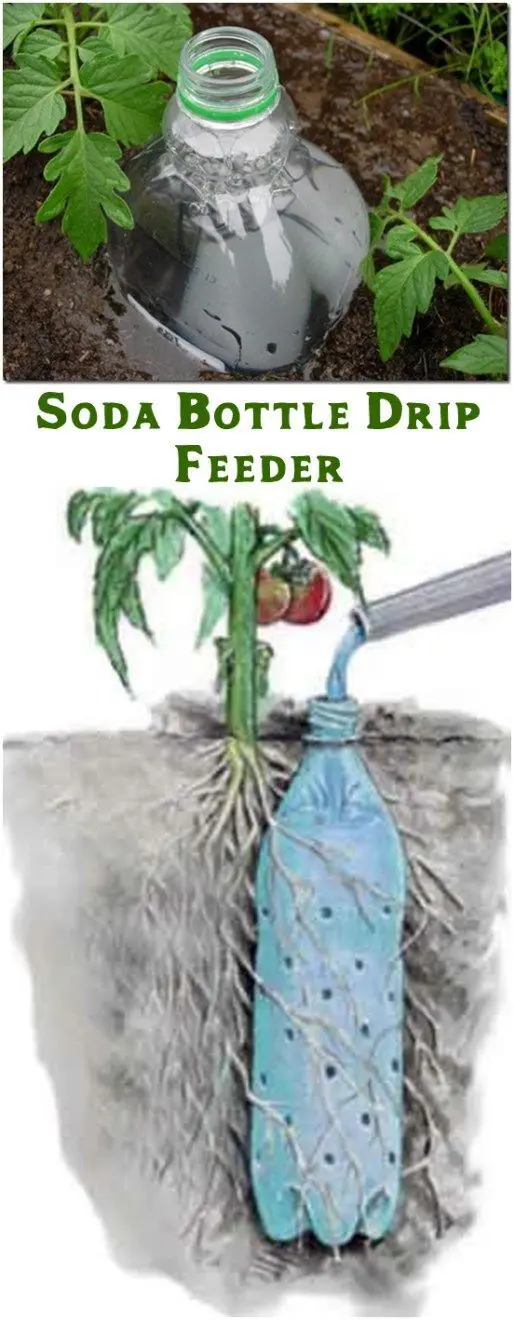
Clever self watering system
The last approach is used mostly in seed starter pot planters for salad vegetables such as lettuce.
First, you are required to cut the bottle in the middle using a scissor. Make two to three holes on the top part and tie the cotton thread.
Once done, fill the bottom part with 25% water.
Invert the top part onto the bottom one, before filling it with your preferred pot soil such that the cotton thread touches the water and connects it to the media.
See the figure below.
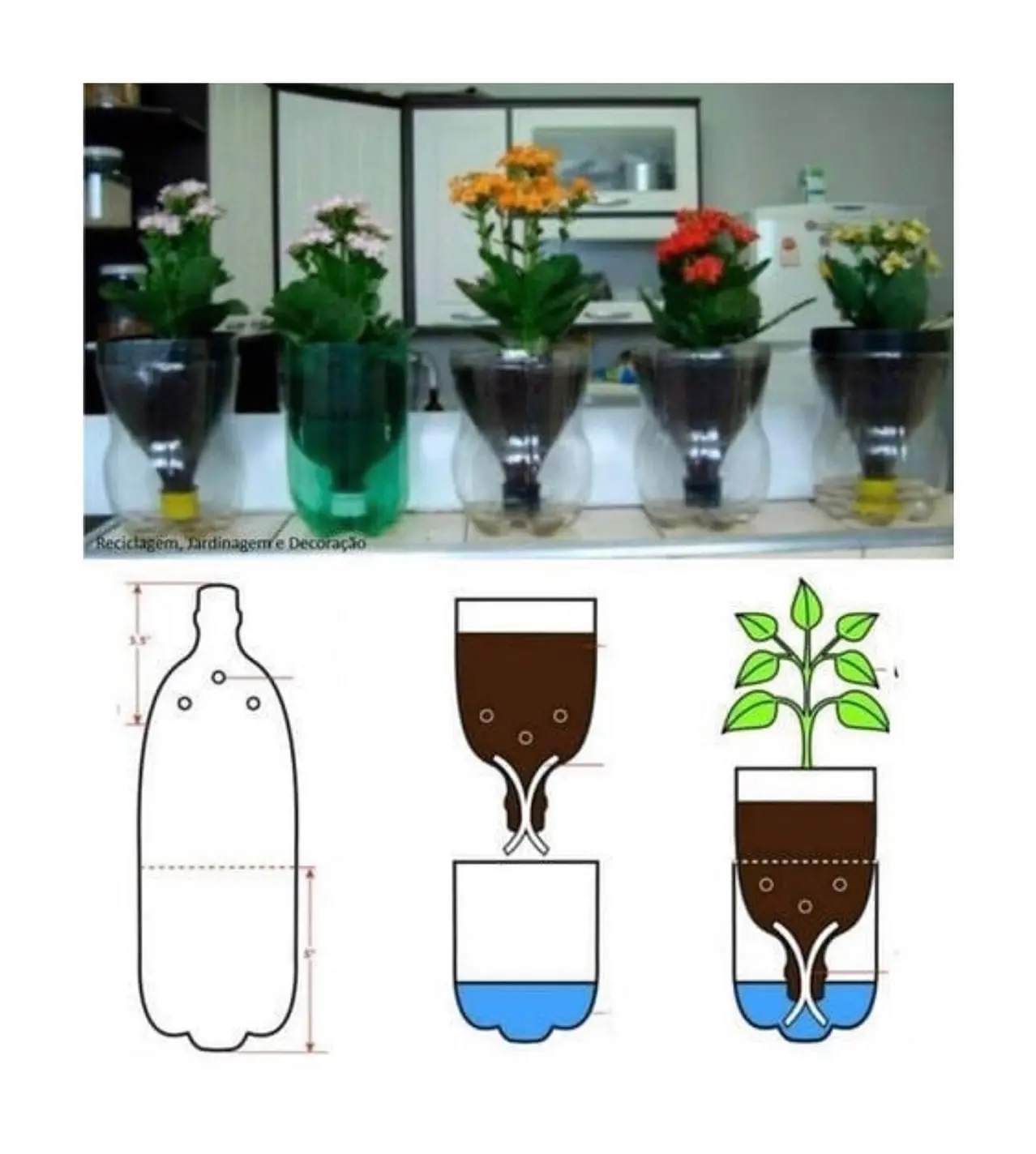
Seed starter smart diy watering planter
If you don’t have plastic bottles but have wine bottles instead, here’s what to do.
3. Automatic plant watering system from recycled wine bottles
Probably one of the simplest method.
Just fill the bottle with water and invert it onto the growing media around the root zone as shown in the photo below.
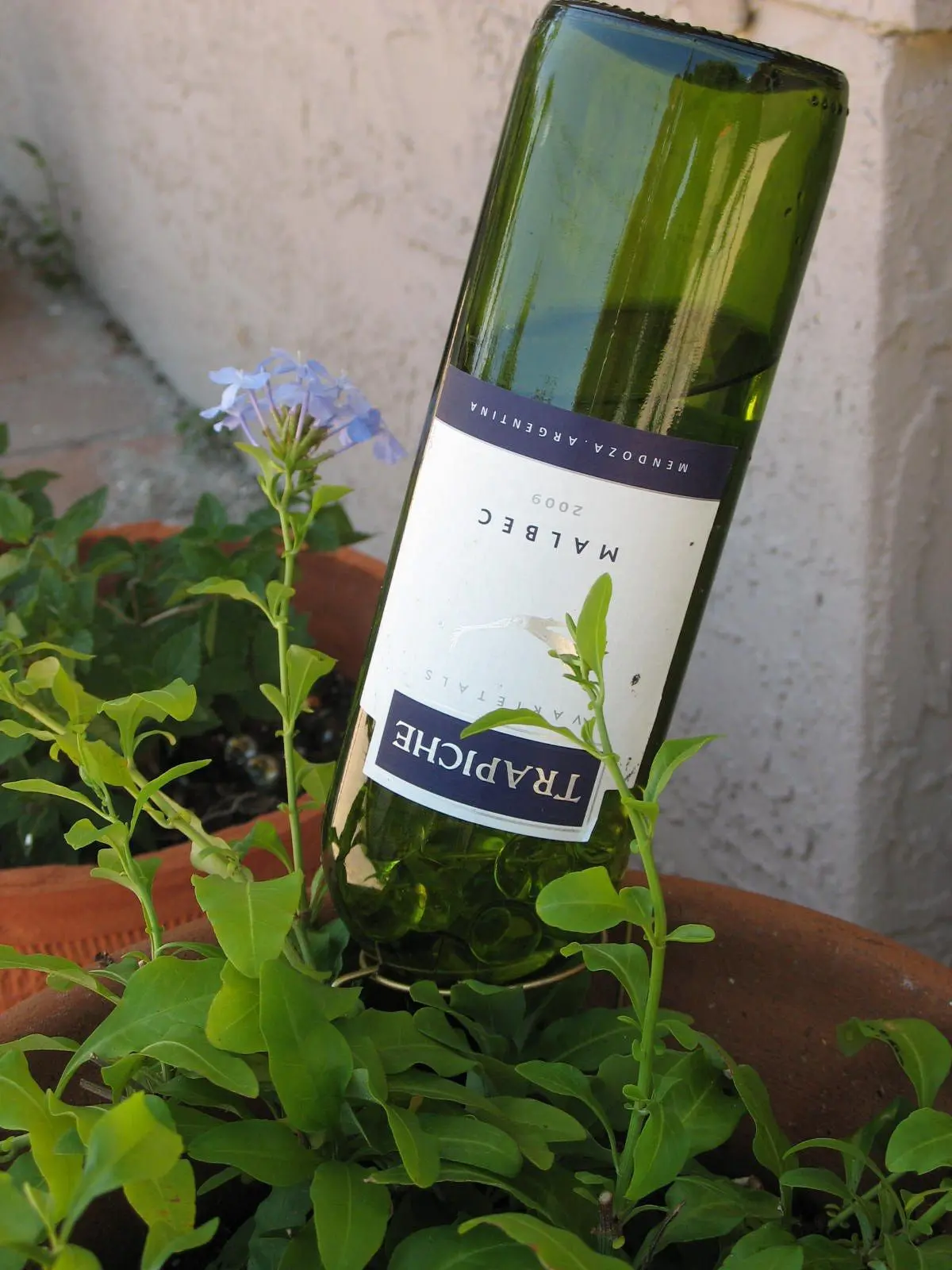
DIY self watering planter using a wine bottle
Most of these DIY watering ideas are at times convenient and will save you the trouble of having to worry when to do the next watering.
I’ve just shared a few of the DIY self-watering planters.
However, there are several problems with these improvised self-watering planters.
One of them is that you cannot control the frequency at which water is applied to the soil.
This makes the soil muddy and could probably stress out your plants or even encourage prevalence of fungal diseases.
Not to mention their inefficient use of water.
If you have many plants to water using these methods, brace yourself for a higher water bill on wasted resources.
That's why I recommend to use incorporate a few options that cost some money. With those options you have better control of the water usage as well as enhanced efficiency.
But if you're on a tight budget, establishing a DIY watering system could be the way to go initially.
Conclusion
There, you have it.
It’s time to stop procrastinating and choose the best automatic plant watering system that suits you.
Make watering your beautiful plants a priority since just like me and you water is life, and your crop needs it.
As usual, I always like to remind you not to close the post without ever taking notes.
Write down two to three watering systems that you feel will best represent your needs and start working on them right away.
That’s the only way to ensure that all the time you’ve devoted to reading blog post after another, provides some meaningful value to your life.
Do you have other automatic plant watering system ideas in mind?
Please share them in the comments.
Editor's Note: This post was originally published in June 2016 and has been revamped and updated for accuracy and comprehensiveness.